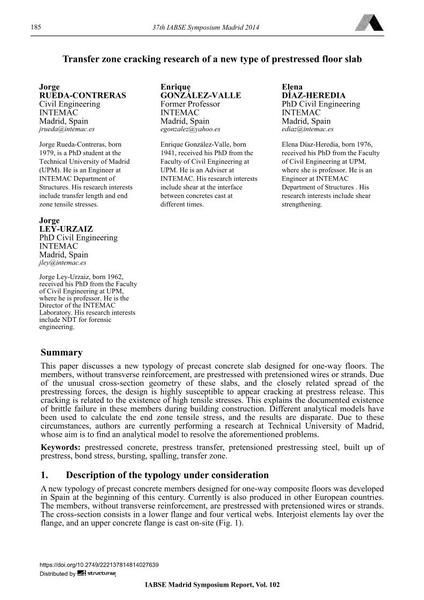Transfer zone cracking research of a new type of prestressed floor slab

|
|
|||||||||||
Détails bibliographiques
| Auteur(s): |
Jorge Rueda-Contreras
Enrique González-Valle Elena Díaz-Heredia Jorge Ley-Urzaiz |
||||
|---|---|---|---|---|---|
| Médium: | papier de conférence | ||||
| Langue(s): | anglais | ||||
| Conférence: | IABSE Symposium: Engineering for Progress, Nature and People, Madrid, Spain, 3-5 September 2014 | ||||
| Publié dans: | IABSE Symposium Madrid 2014 | ||||
|
|||||
| Page(s): | 185-192 | ||||
| Nombre total de pages (du PDF): | 8 | ||||
| Année: | 2014 | ||||
| DOI: | 10.2749/222137814814027639 | ||||
| Abstrait: |
This paper discusses a new typology of precast concrete slab designed for one-way floors. The members, without transverse reinforcement, are prestressed with pretensioned wires or strands. Due of the unusual cross-section geometry of these slabs, and the closely related spread of the prestressing forces, the design is highly susceptible to appear cracking at prestress release. This cracking is related to the existence of high tensile stresses. This explains the documented existence of brittle failure in these members during building construction. Different analytical models have been used to calculate the end zone tensile stress, and the results are disparate. Due to these circumstances, authors are currently performing a research at Technical University of Madrid, whose aim is to find an analytical model to resolve the aforementioned problems. |
||||
